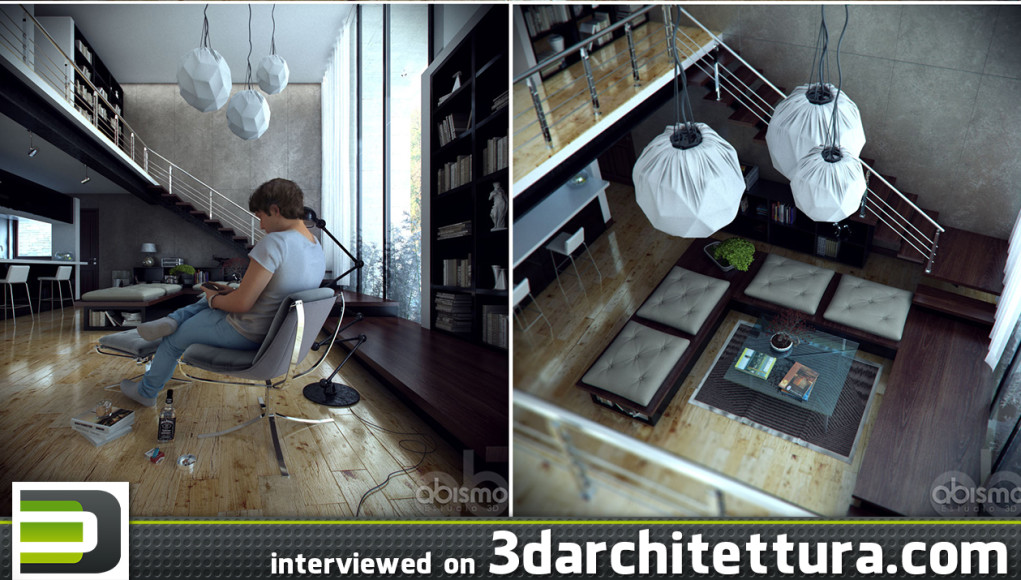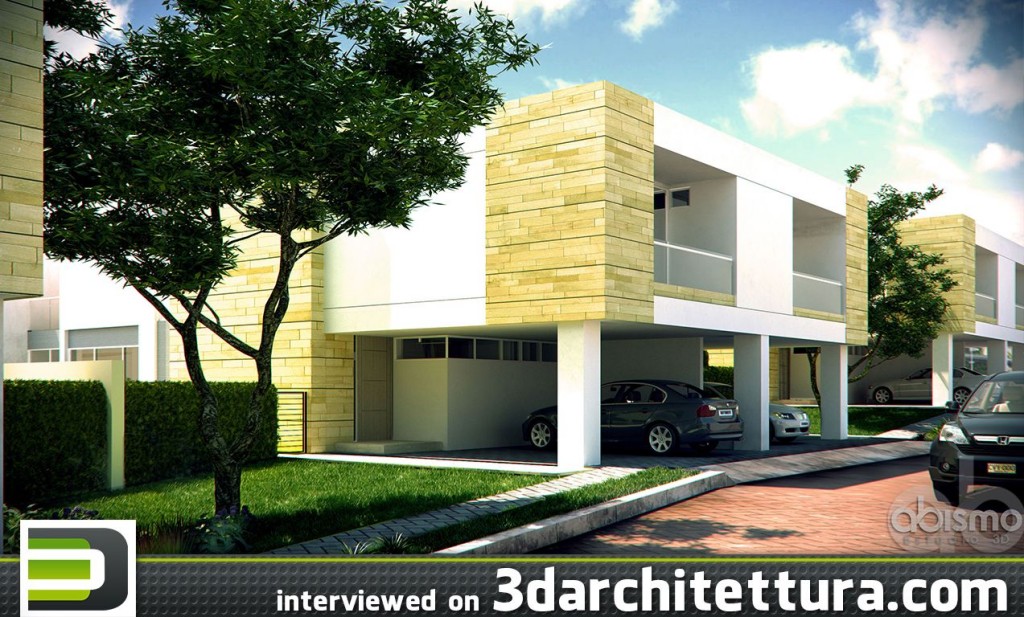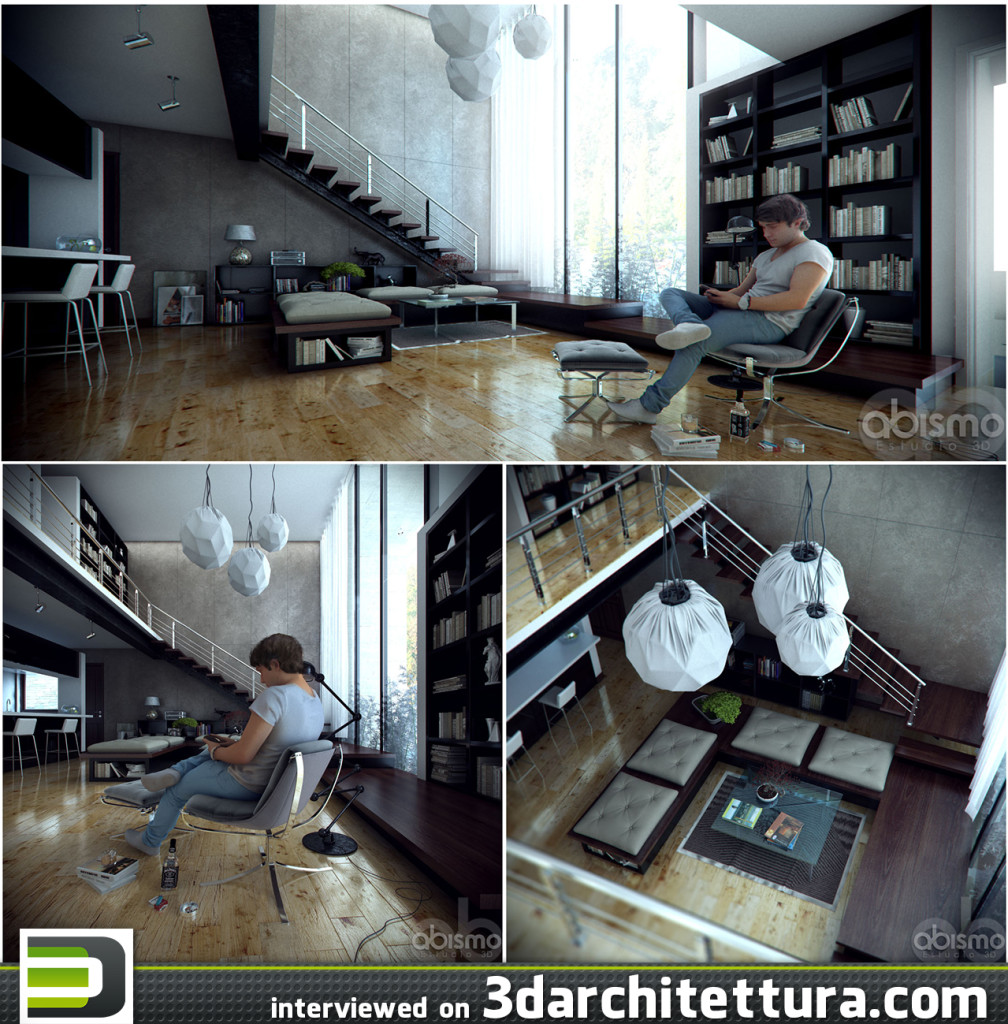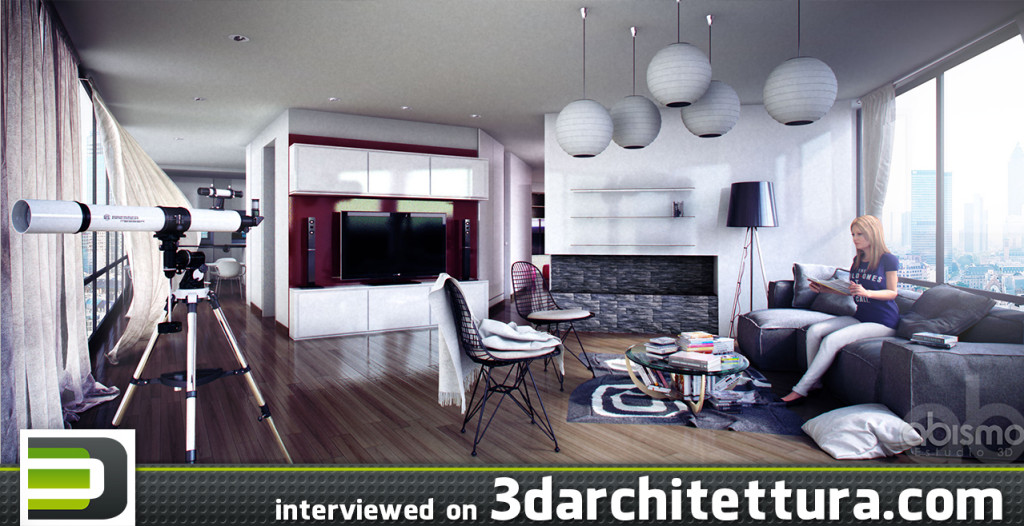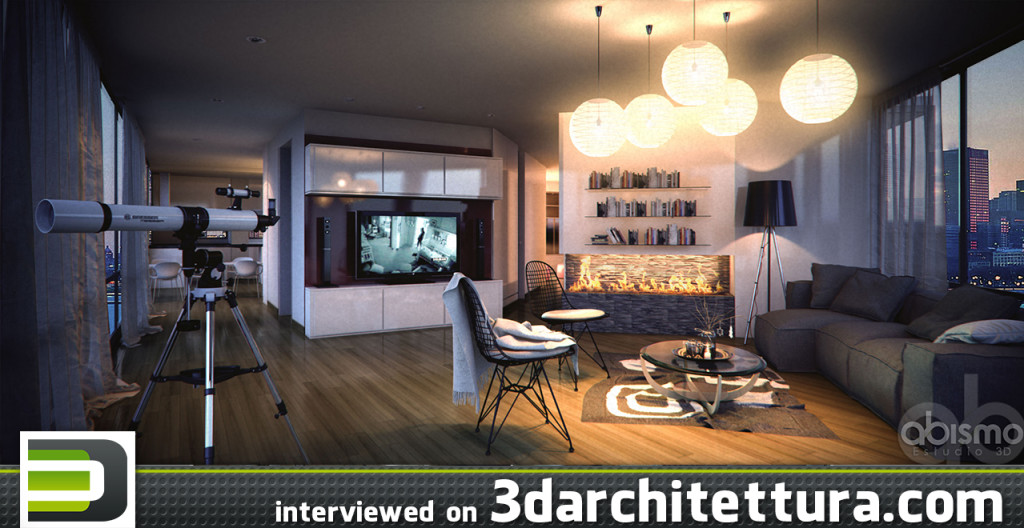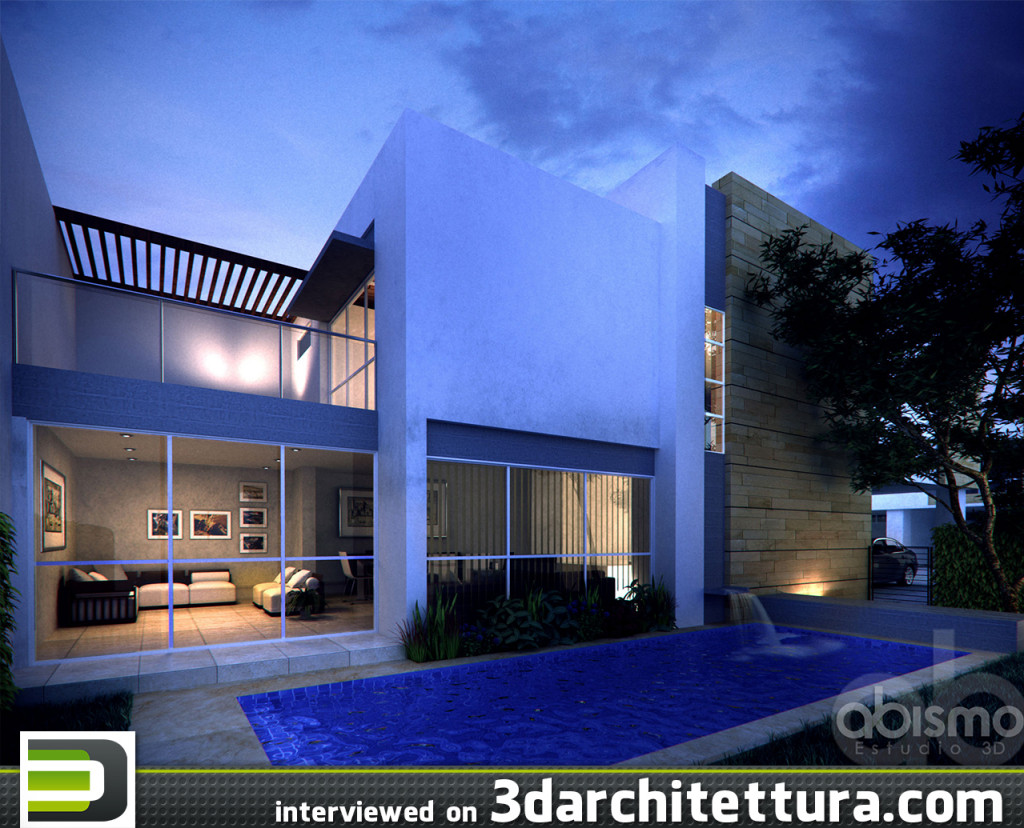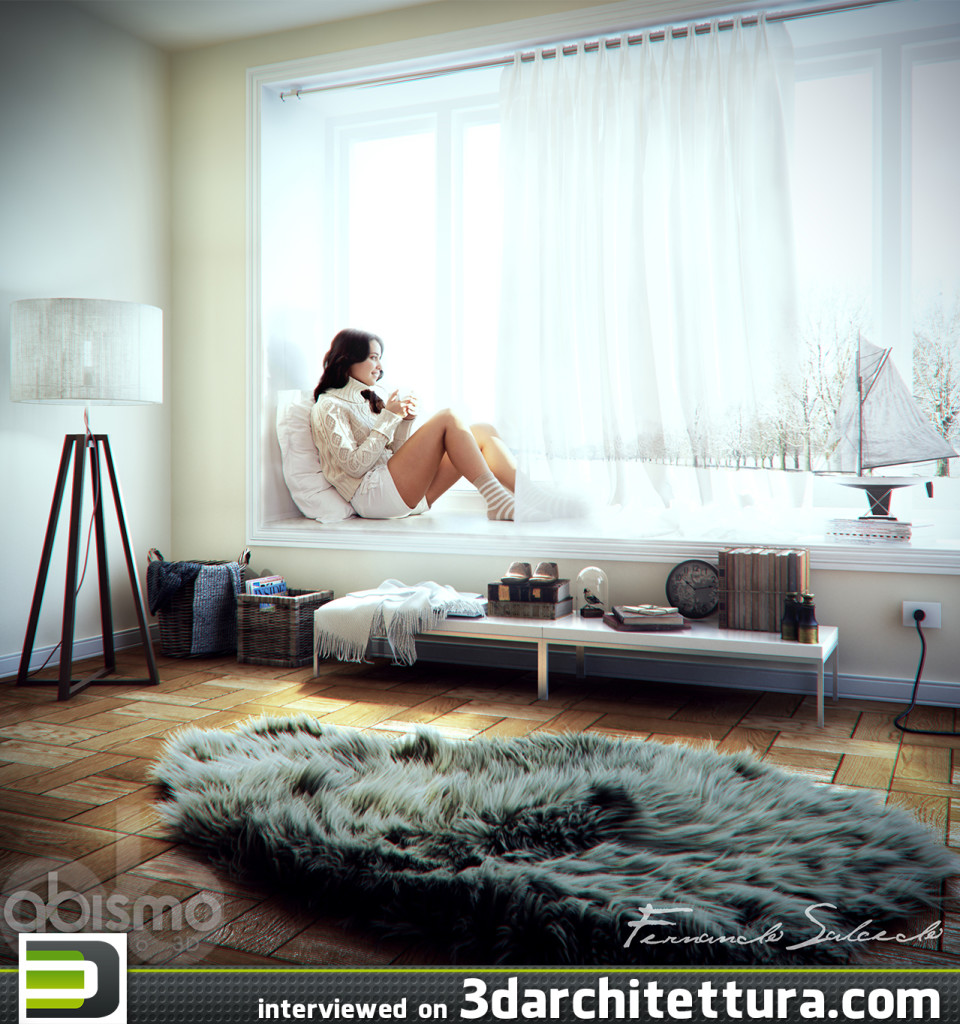Name: Fernando Salcedo
Country: Colombia
Age: 29
Job: CEO & founder at ABismo Estudio 3D
Website/portfolio: www.abismo3d.com
www.flickr.com/photos/119592894@N07
3da: Why have you decided to work in 3d-field and when have you started? Where you studied?
FS: I first got interested in 3D modeling when I started studying architecture at Universidad del Valle in Cali, Colombia. There, I discovered that with 3D you could see or visualize a construction project even before it was built. I think videogames also has an influence in this fascination for 3D. As I said before, I started studying architecture, there I learned the basics and then I took several graduates and courses about my specific interests such as video postproduction, character development, advance lighting and image composition. However most of what I have learned, I have learned autonomously searching on line and working with colleagues, even though me departure point was the basic knowledge from the University.
3da: Describe to our readers your usual workflow
FC: My usual workflow in my company ABismo Estudio 3D, starts dividing the image in three parts. First, the lighting and modeling. Then the textures and materials and after having the render we work on post production. In the company everybody has the capacity to work on any of the three parts of the process. The software and plugins we normally use and the order we use them is 3D-max, V-ray, Photoshop and Magic Bullet. Sometimes when a specific image requires it we use additional plugins such as RealFlow, Forestpack, Floorgenerator, Autograss, Multiscatter among others.
3da: What was most difficult for you when you just started working in 3D? And what is now?
FS: Maybe the biggest difficulty when I was starting was to achieve the correct lighting in terms of images and eliminating the flickering in frames sequences, in terms of animation. In this moment our challenge is achieving realism.
3da: Looking back on your education process what you would have changed now? And what you consider right and would do exactly the same?
FS: I think that currently there are more softwares and plugins that facilitate setting the parameters but that is not necessarily a good thing. It actually discourages the artistic process and it takes away the details and the magic that makes this an art. Personally, I have learned to listen different points of view without taking in account if that person is an expert in 3D, architecture or photography. Sometimes people’s opinions can enrich the quality of the final image and its details making it more suitable for all kinds of public.
3da: Which was the biggest problem that you faced working on a project and how have you solved it?
FS: Maybe it isn’t such a problem but it is a challenge when clients don’t really know that they want but we have always been able to work it out by surprising them with high quality in unexpected aspects of the image.
3da: What forecast you can make about the future of 3d-world in general?
FS: In ABismo Estudio 3D, we understand that this is a growing industry, every day new artists are appearing and they bring new possibilities so we consider that quality becomes a very important factor. More people in this business means more competition but it also means that we need to stay current, innovate and step up as one of the best offers in the market.

















